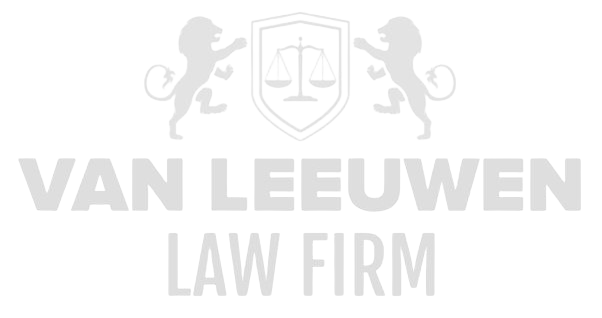Access to advanced technologies has become the absolute key to economic dominance and geopolitical influence in today’s world. It functions not merely as a tool for increasing productivity or efficiency but as a strategic weapon through which states, corporations, and shadow networks establish and consolidate their positions on the global chessboard. Those who control critical technologies—from artificial intelligence and quantum computing to advanced semiconductors and cybersecurity infrastructures—possess an arsenal capable of redrawing the lines of global power. In this arena, technological access does not merely confer a competitive advantage; it provides survival capacity and the ability to manipulate the game of international trade, diplomacy, and sanctions according to one’s own strategic interests.
The significance of technology extends far beyond the purely economic realm and penetrates deeply into the legal and ethical dimensions of governance and corporate conduct. When corporations and state entities deliberately leverage this access to manipulate markets, evade sanctions, or obscure financial malfeasance, a toxic cocktail of power and invisibility emerges. The landscape forces C-suite leaders to navigate not only strategic decisions regarding product development and market expansion but also the delicate boundaries of law and morality. In this context, technological access functions as a dual lens: a tool for advancement and a potential source of catastrophic mismanagement, corruption, and international legal liability.
The Strategic Dimension of Technological Access
Technological access operates as a powerful leverage mechanism within global economic and geopolitical power structures. Companies and states that control this access have the ability to dominate markets, create dependencies, and confine competitors within an orbit of weakness and vulnerability. This mechanism is not confined to conventional industries; in the financial sector, energy supply, and defense technology, the strategic use of technology can have immediate consequences for international sanctions regimes and the enforcement of anti-bribery and anti-money laundering regulations. The impact is systemic: a single corporation with access to advanced data processing systems can manipulate financial flows, exploit offshore structures, and circumvent oversight mechanisms, blurring the line between legitimate enterprise and organized corruption.
The historical precedent set by technological control cannot be underestimated. Entities that lead technologically redefine the conditions for international cooperation, competition, and compliance. In an era of digital currencies, artificial intelligence, and big data analytics, even subtle technological differences can translate into unprecedented financial dominance. Corporations exploiting these asymmetric power positions face a high risk of becoming embroiled in practices that undermine international regulations. The result is a complex entanglement of strategic power, legal exposure, and ethical dilemmas that unfold in the boardroom, far from public scrutiny.
Technology also serves as an instrument of surveillance and control. Advanced systems enable states and corporations to monitor transactions, analyze network connections, and detect potential threats early. Yet, in the hands of opportunistic leaders and financial architects of complex corporate structures, this mechanism can be transformed into a weapon of manipulation and power consolidation. Such situations frequently lead to allegations of fraud, bribery, and systematic evasion of sanctions, with technological superiority creating a veil of invisibility over illicit activities and misconduct that would otherwise be immediately exposed.
Financial Mismanagement and the Technological Veil
The phenomenon of financial mismanagement is intimately intertwined with technological access in the digital era. Sophisticated accounting systems, algorithmic trading platforms, and international payment infrastructures make it possible to structure financial flows in ways that conventional regulators can scarcely comprehend. For the C-suite, this represents a constant balancing act between strategic expansion and avoiding legal pitfalls. Manipulating figures, concealing losses, and creating seemingly legitimate transaction chains are no longer theoretical risks but tangible threats arising from the strategic deployment of technological tools.
The veil of technological complexity also provides cover for international money laundering and deliberate violations of sanctions. Transnational networks of corporations and financial institutions can, through the clever integration of advanced technologies, legitimize resources of dubious origin while simultaneously circumventing oversight mechanisms. For executives, this means that strategic decisions carry not only economic or operational consequences but also direct legal and reputational risks. Any misplaced trust in apparent transparency can escalate into explosive scandals and international condemnation.
At its core, financial mismanagement becomes an instrument of geopolitical and economic power. Technology acts not merely as a facilitator but as an active partner in constructing networks of dependency, influence, and control. Organizations that fail in this domain, or willingly participate in exploiting these instruments, risk being flagged for allegations of fraud, corruption, and sanction-busting, with potentially catastrophic consequences for shareholder value, reputation, and personal liability of leaders in the C-suite.
Corruption and the Global Sanctions Dynamic
In a world where international sanctions serve as primary instruments of geopolitical pressure, technological access becomes a critical factor in circumventing or undermining regulation. Corporations that strategically deploy advanced IT architectures, crypto transactions, or data-driven networks can execute operations entirely beyond conventional oversight. This opens the door to forms of corruption previously unthinkable: structured payments to foreign officials, indirect support for regime-aligned entities, and systematic evasion of embargoes. Technology in this context has a dual role: it offers unparalleled efficiency while simultaneously providing a cloak of opacity that facilitates abuse.
The ethical and legal implications of such practices are monumental. Corporations using technology to circumvent sanctions risk not only heavy fines, international litigation, and reputational damage but also the integrity of entire markets. For the boardroom, this requires that every strategic decision be carefully weighed against the potential for legal liability and public censure. Failure to maintain this balance, even under ostensibly legitimate commercial interests, can result in allegations of corruption and money laundering remembered by judicial systems and public opinion for decades.
Technological access also functions as a tool of asymmetric power. Entities with access to advanced information and transaction systems can monitor competitors, manipulate markets, and subtly bypass legal frameworks. This creates an unequal power dynamic in which the risks of misconduct often remain entirely out of view of regulators and shareholders. The implications for leadership are profound: strategic vision must be coupled with deep understanding of compliance, international law, and the capacity of technology to accelerate both progress and scandal.
Conclusion: Technology as a Mirror of Moral and Strategic Choices
Access to technology is not merely a matter of infrastructure, investment, or innovation capacity; it represents a moral and strategic question at the heart of economic power and geopolitical dominance. Every technological decision carries implications extending beyond profits or market share: it affects legal liability, reputational risk, and the potential for allegations of financial mismanagement, corruption, or sanction-busting. For those occupying the C-suite, understanding this dual role of technology is crucial: a tool for advancement can simultaneously serve as an instrument of destruction when strategic acumen is combined with opportunism or moral blindness.
In today’s international context, technological access serves as a mirror reflecting character, strategic wisdom, and ethical compass. Organizations that use this access to operate markets fairly and comply with regulations not only strengthen their position but contribute to stability and trust on a global scale. Those that exploit technology for power concentration, financial manipulation, or sanction evasion face decades-long repercussions, both legal and reputational. It is an era in which technological superiority, strategic calculation, and ethical integrity are inseparably linked, and where any misstep in the boardroom can have international consequences that transcend the boundaries of conventional business.









